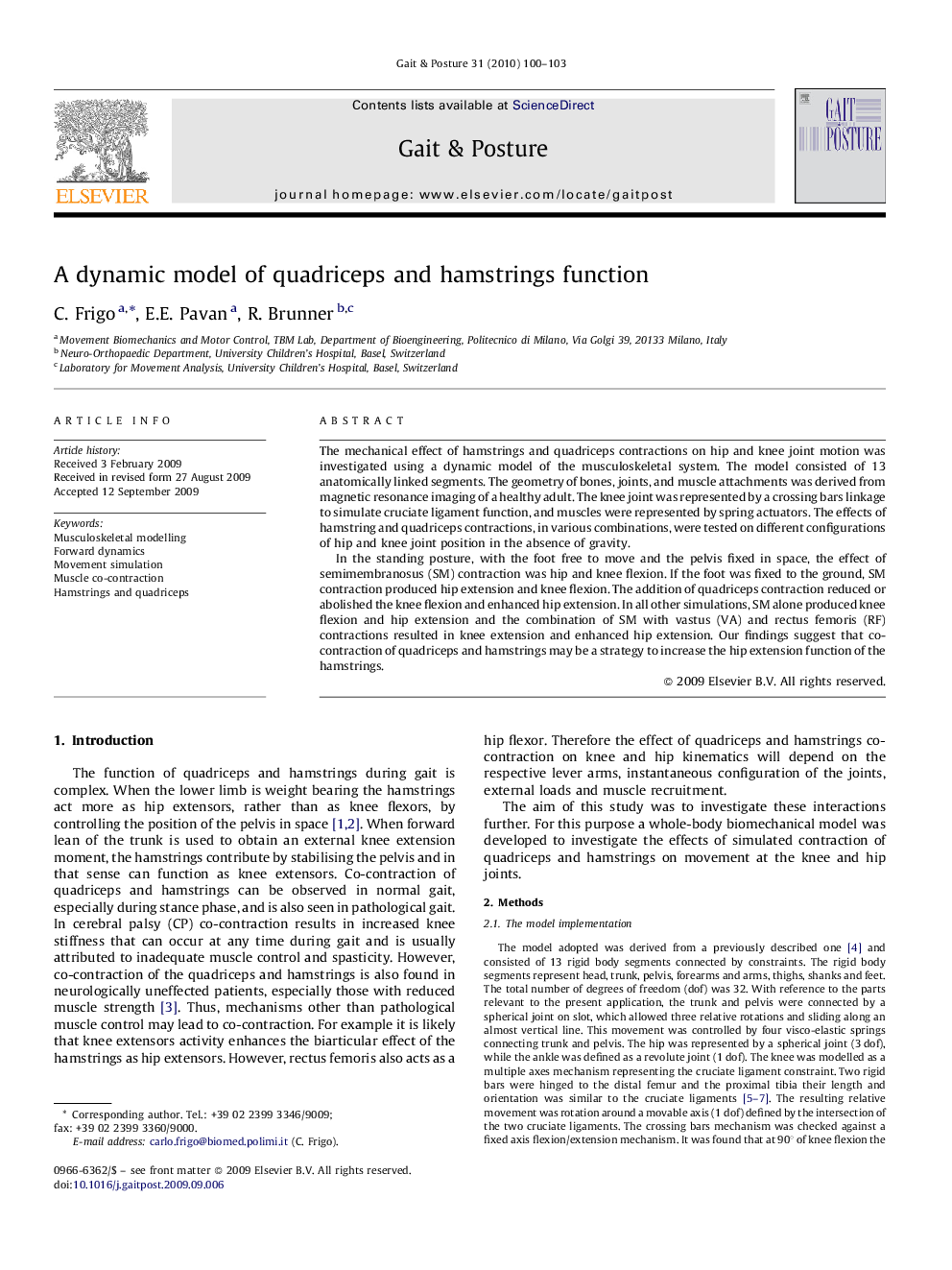| Article ID | Journal | Published Year | Pages | File Type |
|---|---|---|---|---|
| 4057208 | Gait & Posture | 2010 | 4 Pages |
The mechanical effect of hamstrings and quadriceps contractions on hip and knee joint motion was investigated using a dynamic model of the musculoskeletal system. The model consisted of 13 anatomically linked segments. The geometry of bones, joints, and muscle attachments was derived from magnetic resonance imaging of a healthy adult. The knee joint was represented by a crossing bars linkage to simulate cruciate ligament function, and muscles were represented by spring actuators. The effects of hamstring and quadriceps contractions, in various combinations, were tested on different configurations of hip and knee joint position in the absence of gravity.In the standing posture, with the foot free to move and the pelvis fixed in space, the effect of semimembranosus (SM) contraction was hip and knee flexion. If the foot was fixed to the ground, SM contraction produced hip extension and knee flexion. The addition of quadriceps contraction reduced or abolished the knee flexion and enhanced hip extension. In all other simulations, SM alone produced knee flexion and hip extension and the combination of SM with vastus (VA) and rectus femoris (RF) contractions resulted in knee extension and enhanced hip extension. Our findings suggest that co-contraction of quadriceps and hamstrings may be a strategy to increase the hip extension function of the hamstrings.
